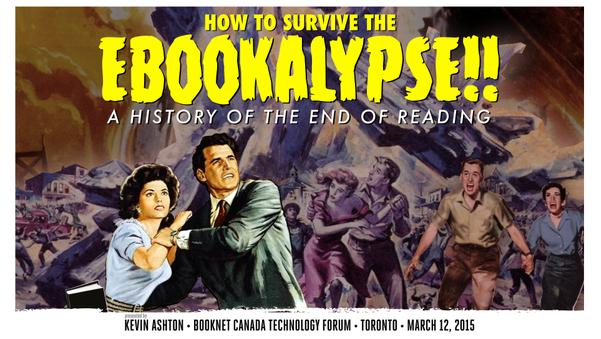 At this year’s Tech Forum, Kevin Ashton presented on new technology and “How to Survive the Ebookalypse.” He began by saying, “We live in an age of paranoia about reading and publishing, but that’s actually not a new thing.” Undeniably, the industry is in state of transition and print sales are down. But much like the invention of the paperback format, technology will not destroy reading. Instead, Ashton argues, “Technology is feeding literacy and literacy is causing a need for new technology.” (You can watch the full talk here.)
At this year’s Tech Forum, Kevin Ashton presented on new technology and “How to Survive the Ebookalypse.” He began by saying, “We live in an age of paranoia about reading and publishing, but that’s actually not a new thing.” Undeniably, the industry is in state of transition and print sales are down. But much like the invention of the paperback format, technology will not destroy reading. Instead, Ashton argues, “Technology is feeding literacy and literacy is causing a need for new technology.” (You can watch the full talk here.)
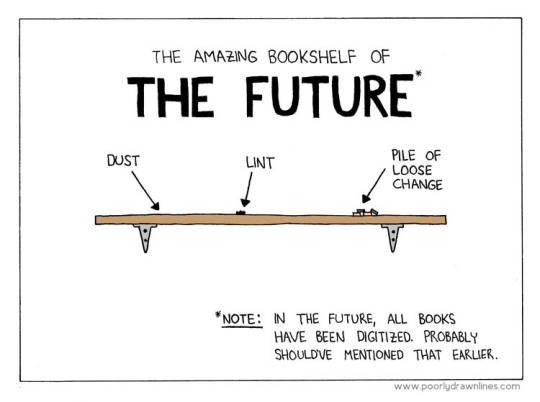 So where did this paranoia begin and how can we survive the Ebookalypse? First, let’s talk about paranoia. Paranoia is influenced by anxiety or fear, and — much like my hypochondriacal fear of contracting Ebola — is often anecdotal, rash, and irrational. At Tech Forum, Noah Genner’s presentation on BNC Research cautioned that many slides featured “graphs with lines going down.” At first glance, these graphs can induce some anxiety, but “worrying is like a rocking chair,” as my grandma likes to say.
So where did this paranoia begin and how can we survive the Ebookalypse? First, let’s talk about paranoia. Paranoia is influenced by anxiety or fear, and — much like my hypochondriacal fear of contracting Ebola — is often anecdotal, rash, and irrational. At Tech Forum, Noah Genner’s presentation on BNC Research cautioned that many slides featured “graphs with lines going down.” At first glance, these graphs can induce some anxiety, but “worrying is like a rocking chair,” as my grandma likes to say.
While correlation does not equal causation, this decline is likely influenced by the introduction of new technology, devices, and ebook vendors in Canada. Despite the decline in print sales, if we consider the use of new formats and the gradual increase in population and global literacy, as Kevin explained, there is ample evidence to suggest that we are still reading… and reading more than ever before.

Although BookNet does not have access to ebook sales in Canada, our consumer research offers an alternative look into Canadian book buyer behaviour, including reading habits and adoption of digital content. Our consumer study, The Canadian Book Consumer, concentrates on developing an understanding of book consumers by genre.
All respondents in our consumer panel had purchased a minimum of one book in the prior month and were asked to identify the category of all books purchased. The tables below examine purchasing trends by subject based on our 2013 consumer panel, and the corresponding charts represent the year-over-year market share percentage of Fiction or Non-Fiction based on BNC SalesData.

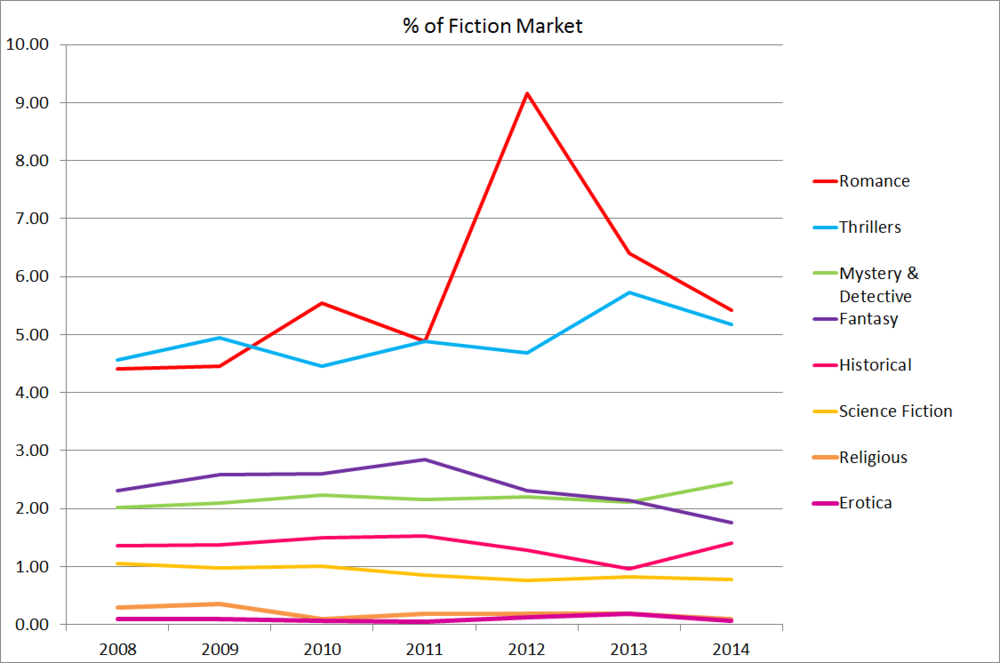
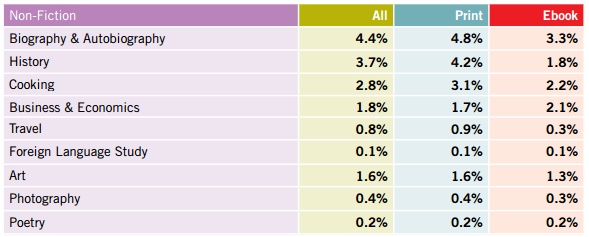
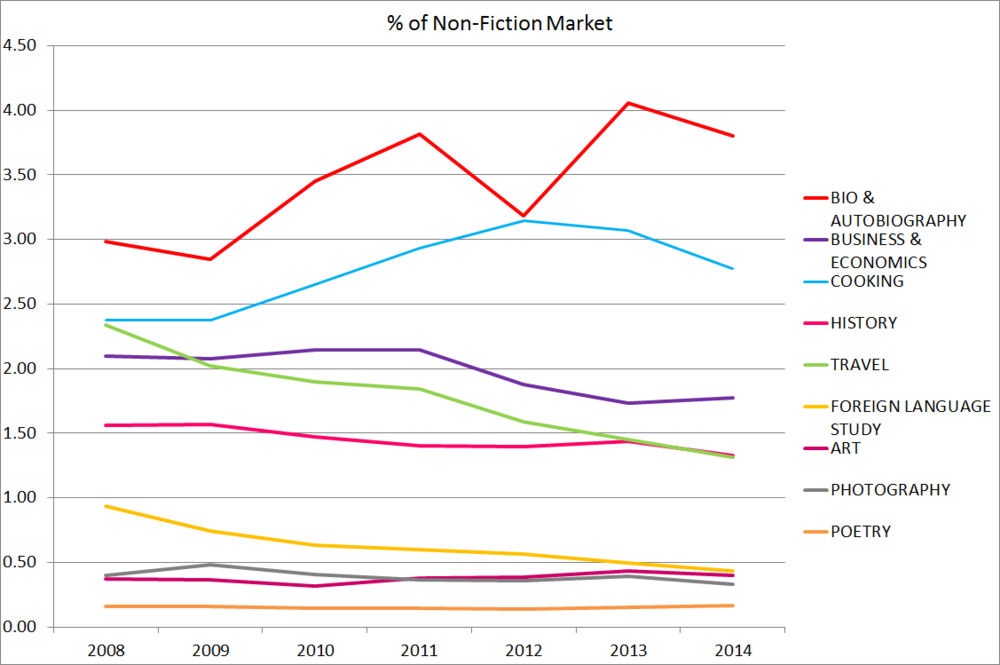
If we compare sales by genre to consumer data, there is a notable correlation between ebook adoption and a decline in print sales. Fiction titles have the highest percentage of ebook usage among consumers, specifically in genre categories like Romance and Mystery/Detective. When looking at the Thriller category, Noah Genner commented: “We know ebook sales are picking up in genre categories, but these categories are still doing well in print.” (As an aside, since respondents were asked to identify each book’s genre, this may explain why Mystery/Detective shows a greater market share percentage than Thriller, due to common conflation of the two genres.)
While Mystery/Detective and Thriller continue to sell well in both formats, Romance saw a notable decline in print sales, with ebooks representing 9% of consumer purchases (compared to 7% print). It is important to remember that bestsellers can drastically impact an entire category; for example, in 2012 Romance had a dramatic peak due to the infamous book that everyone loves to hate, Fifty Shades of Grey—and it’s titles like this that may explain the notable shift in format preference among Romance book buyers. While discussing the new “hybrid reader” at Tech Forum 2015, Mary Alice Elcock, VP Marketing and Publisher Relations at BitLit, confessed: “I often find myself using my e-reader when I’m not keen on other people knowing that I’m reading… 50 Shades of Grey…Twilight.” Perhaps cover-shy, many romance readers gravitated to the ebook format and “by 2010, romance novels were the fastest growing part of the ebook market.” Ebooks alone may be responsible for the decline in mass-market sales, which once characterized the genre and often featured a distressed woman clinging to Fabio Lanzoni on the cover.
Conversely, print sales in Non-Fiction categories like Art, Photography, Cooking, and Poetry remain flat or trend up, because they tend to not be ebook-focused subject categories (although presentations at Tech Forum show other new developments for these categories). Furthermore, it’s not just ebooks affecting print sales. There is the added influence of apps and websites on Non-Fiction categories like Travel and Foreign Language.
So Canadians are still reading, but new technology is changing how they read. In the end, “We want to sell more. We want to convert more. And we just want to get more people reading” (Genner). The Ebookalypse does not signify the end of reading and it’s unlikely that I’ll contract Ebola. Perhaps, as Ashton argued, “this is the beginning of reading.”
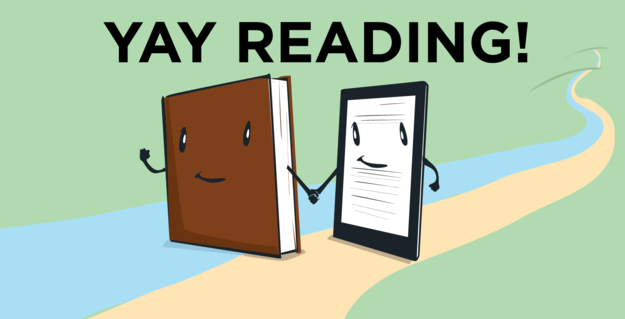
For a comprehensive overview of print sales in Canada, you can purchase The Canadian Book Market 2014. Or check out The Canadian Book Consumer 2013 for a comprehensive tell-all about the Canadian book buyer.


